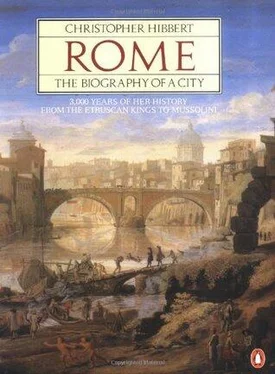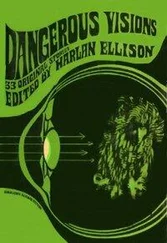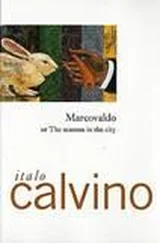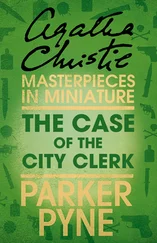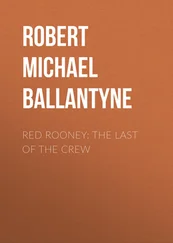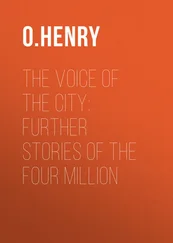Christopher Hibbert - Rome. The Biography of the City
Здесь есть возможность читать онлайн «Christopher Hibbert - Rome. The Biography of the City» весь текст электронной книги совершенно бесплатно (целиком полную версию без сокращений). В некоторых случаях можно слушать аудио, скачать через торрент в формате fb2 и присутствует краткое содержание. Жанр: Культурология, Искусство и Дизайн, на английском языке. Описание произведения, (предисловие) а так же отзывы посетителей доступны на портале библиотеки ЛибКат.
- Название:Rome. The Biography of the City
- Автор:
- Жанр:
- Год:неизвестен
- ISBN:нет данных
- Рейтинг книги:3 / 5. Голосов: 1
-
Избранное:Добавить в избранное
- Отзывы:
-
Ваша оценка:
- 60
- 1
- 2
- 3
- 4
- 5
Rome. The Biography of the City: краткое содержание, описание и аннотация
Предлагаем к чтению аннотацию, описание, краткое содержание или предисловие (зависит от того, что написал сам автор книги «Rome. The Biography of the City»). Если вы не нашли необходимую информацию о книге — напишите в комментариях, мы постараемся отыскать её.
Rome. The Biography of the City — читать онлайн бесплатно полную книгу (весь текст) целиком
Ниже представлен текст книги, разбитый по страницам. Система сохранения места последней прочитанной страницы, позволяет с удобством читать онлайн бесплатно книгу «Rome. The Biography of the City», без необходимости каждый раз заново искать на чём Вы остановились. Поставьте закладку, и сможете в любой момент перейти на страницу, на которой закончили чтение.
Интервал:
Закладка:
(iii) The MUSEO GREGORIANO EGIZIANO. The first collection of Egyptian antiquities was made by Pius VII (1800–1823) from pieces in the VATICAN, the CAPITOLINE MUSEUM and HADRIAN'S VILLA. Gregory XVI arranged for their display here in 1839. The collection has been enriched by gifts from Egypt.
(iv) The MUSEO GREGORIANO ETRUSCO. This was founded by Gregory XVI in 1837.
(v) The MUSEO CHIARAMONTI. Founded by Pius VII (1800–1823) as an additional museum of antiquities, this comprises (a) the Museo Chiaramonti proper, (b) its extension, the Gallería Lapidaria which contains some five thousand pagan and Christian inscriptions, and (c) the Braccio Nuovo (see note 5, Chapter 9), which contains a statue of Augustus, said to be the finest portrayal of the Emperor which has come down to us.
(vi) The GALLERIA DEI CANDELABRI E DEGLI ARAZZI. This is a gallery containing classical sculpture of secondary interest. Frescoed with depictions of events from the life of Pope Leo XIII (1878–1903), it takes its name from the pairs of splendid candelabra placed beneath the arches, and the Flemish tapestries which were designed by pupils of Raphael. It was originally a loggia built by Pope Clement XIII over the west wing of the CORTILE DELLA PIGNA. The loggia was enclosed by Pius VI.
(vii) The GALLERIA DELLE CARTE GEOGRA-PHICHE, the walls of which are decorated with maps of all the regions of Italy painted in 1580–83 by Antonio Danti, brother of the geographer, Egnazio. The gallery was built for Pope Gregory XIII (1572-85) and has been attributed to both Martino Longhi the elder and Ottaviano Mascarino.
(viii) The MUSEO PROFANO DELLA BIBLIOTECA, a single room designed for Clement XIII in 1767 to exhibit the papal collection of medals.
(ix) The VATICAN LIBRARY (see note 7, Chapter 7).
(x) The MUSEO SACRO DELLA BIBLIOTECA. Founded in 1756 by Benedict XIV, this was rearranged in the time of Pius IX to display objects of Christian art. It contains relics and church furnishings from the SANCTA SANCTORUM. The adjoining SALA DELLE NOZZE ALDOBRANDINI takes its name from the ancient painting which represents Alexander's marriage to Roxana. Discovered on the Esquiline hill in 1605 in very good condition, it is believed to be a copy of a painting by the Greek artist, Aëtion, of the fourth century B. C.
(xi) The MUSEO STORICO. This contains a collection of papal carriages and arms and armour once used by the Papal Guards.
(xii) The former Lateran collections comprising (a) the MUSEO PIO CRISTIANO, founded by Pius IX in 1854 and notable for its collection of early Christian sarcophagi, (b) the MUSEO GREGORIANO PROFANO, founded by Gregory XVI (1831–46), containing inscriptions, mosaics and sculptures, including a room devoted to statues of women, and (c) the MUSEO MISSIONARIO ETHNOLOGICO, founded in 1926 by Pius XI, which contains a visual history of the Roman Catholic missions all over the world.
There is also an excellent, extensive and surprisingly eclectic museum of modern art, many of whose paintings were presented by the artists themselves.
4. The GABINETTO DELLE MASCHERE is part of the MUSEO PIO-CLEMENTINO. It derives its name from the mosaic floor which was found in 1780 in HADRIAN'S VILLA and which is decorated with masks.
5. The OBELISK in front of SS. TRINITÀ DEI MONTI is an imperial Roman copy of an obelisk of the period of Rameses II. It was found in the gardens of the PALACE OF SALLUST and placed here in 1789 by order of Pius VI.
6. The OBELISK OF PSAMMETICUS II in PIAZZA DI MONTECITORIO was brought from Heliopolis by Augustus who had it placed in the CAMPUSMARTIUS. It toppled over after a fire, and was raised again by Pius VI in 1792. It is fourth in size of the thirteen obelisks still remaining out of the forty-eight which stood in Rome in imperial times. It is 29 metres high.
7. The OBELISK in PIAZZA DEL QUIRINALE was brought here from the AUGUSTEUM when Pius VI rearranged the group of the Dioscuri (the two huge statues of Castor and Pollux standing by their horses) which had been found in the BATHS OF CONSTANTINE during the pontificate of Sixtus V. The obelisk was placed between the Dioscuri and the whole decorative feature was completed when Pius VII's architect, Raffaello Stern, added the fountain, using a great granite basin which had stood in front of the TEMPLE OF CASTOR AND POLLUX in the FORUM.
8. The STATUES OF THE HORSE-TAMERS in Piazza del Quirinale are Roman copies of Greek originals. They probably once stood in the BATHS OF CONSTANTINE which were built nearby towards the beginning of the Emperor's reign in about A.D. 315.
9. The impressively dignified bronze STATUE OF ST PETER, which stands on the right of the nave of the basilica near the BALDACCHINO, was long believed to have been made in the time of St Leo I (440–61) and converted from an ancient statue of the Capitoline Jupiter. Most authorities, however, now assert that it dates from the thirteenth century and believe it to be the work of Arnolfo di Cambio. The marble throne is certainly by a craftsman of the Renaissance, and the Sicilian jasper plinth with its green porphyry panels was carved in 1756–7 by Carlo Marchionni. For centuries the faithful have filed past the seated figure, whose right hand is raised in benediction and whose left clasps a large key, to kiss or rub their foreheads against the toes of the outstretched right foot. On certain festivals the statue is bedecked with fine vestments, jewels and mitre.
10. The PALAZZO FALCONIERI in the Via Giulia originally belonged to the Odescalchi. They sold it in 1606 to Pietro Farnese, Duke of Latera, from whom Orazio Falconieri bought it in 1638. In 1646, having acquired a neighbouring palace, Falconieri commissioned Borromini to design a new façade and a grand staircase. It is now occupied by the Hungarian Academy of Arts.
In 1815 Madame Mère bought the PALAZZO ASTE-BUONAPARTE (now MISCIATELLI) next to the PALAZZO DORIA. This was built in 1658–65 by Giovanni Antonio de' Rossi for the d'Aste family. From the covered balcony Madame Mère used to watch the promenade in the Corso below. The exterior was restored in 1979.
15. THE RISORGIMENTO AND THE ROMAN QUESTION
1. The VILLA CORSINI, whose celebrated salon had twelve doors and twelve windows and was known as the Casino dei Quattro Venti, was built by Simone Salvi towards the middle of the eighteenth century for the Corsini family. It was acquired in 1849 by the Prince Doria of the time who added its grounds to those of the Villa del Bel Respiro, also known as the VILLA DORIA PAMPHILJ. It was destroyed in the fighting and replaced by a triumphal arch.
2. The Casino of the VILLA DORIA PAMPHILJ was built about 1650 for Prince Camillo Pamphilj, a nephew of Pope Innocent X, by Alessandro Algardi. After the Second World War it was let to the Belgian government as a residence for their ambassador in Rome, and the surrounding extensive grounds were opened as a public park.
3. Known as del Vascello because it was shaped like a ship, the VILLA MEDICI DEL VASCELLO was designed by Basilio Bicci and built in the second half of the seventeenth century. It belonged to an agent in Rome of Louis XIV, Elpidio Benedetti, and was adorned with medallions and portraits of French royalty. Benedetti left the villa to the Duc de Nevers from whom it passed to Count Giraud whose name it bore during the events of 1849. Having been acquired by Prince Doria, its grounds were incorporated into those of the VILLA DORIA PAMPHILJ. It was later bought by the Medici family.
4. The CAFFÈ NUOVO was on the Corso on the ground floor of the PALAZZO RUSPOLI (built by A for the Rucellai in 1586). It was closed when the waiters declined to serve two French officers and later opened as the Caffè Militare Francese for the use of the French occupying forces. After the fall of Rome, it became a favourite haunt of officers in the army of King Victor Emmanuel II, and was then known as the Caffè Italia. It disappeared when the ground floor of the Palazzo Ruspoli was leased to the Banco Nazionale.
Читать дальшеИнтервал:
Закладка:
Похожие книги на «Rome. The Biography of the City»
Представляем Вашему вниманию похожие книги на «Rome. The Biography of the City» списком для выбора. Мы отобрали схожую по названию и смыслу литературу в надежде предоставить читателям больше вариантов отыскать новые, интересные, ещё непрочитанные произведения.
Обсуждение, отзывы о книге «Rome. The Biography of the City» и просто собственные мнения читателей. Оставьте ваши комментарии, напишите, что Вы думаете о произведении, его смысле или главных героях. Укажите что конкретно понравилось, а что нет, и почему Вы так считаете.
